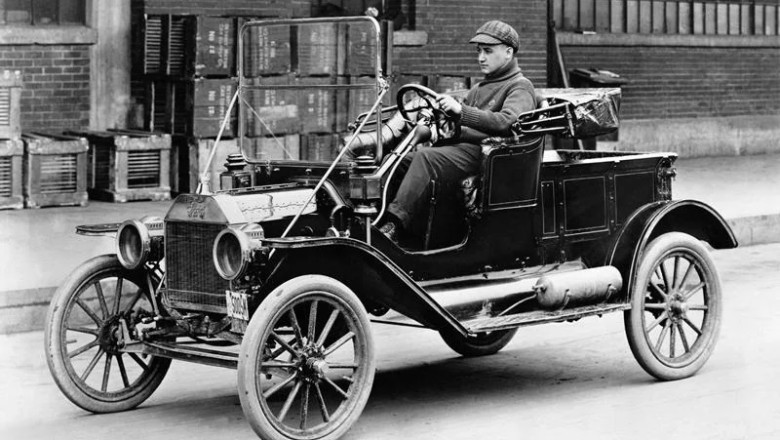The Ford Model T, often referred to as the "Tin Lizzie," is undeniably the car that revolutionized the automobile industry. Introduced by the Ford Motor Company in 1908, the Model T was a game-changer in every sense of the word. It was the first affordable automobile, opening up car ownership to a much broader segment of the population. Before the Model T, cars were luxury items, accessible only to the wealthy. Henry Ford's vision was to create a car for the masses, and he succeeded spectacularly.
The impact of the Ford Model T on society and the economy was profound. By implementing assembly line production, Ford was able to drastically reduce the cost of manufacturing. This innovation not only made the Model T affordable but also revolutionized industrial production across various sectors. The assembly line allowed for the mass production of goods at unprecedented speeds and efficiency, setting the stage for the modern manufacturing era.
The Model T was designed with simplicity and durability in mind. It featured a robust 20-horsepower engine, which, while modest by today's standards, was more than sufficient for the needs of early 20th-century drivers. The car's high ground clearance and versatile design made it suitable for the rough, unpaved roads of the time. Its easy maintenance and repairability further added to its appeal, as owners could perform many repairs themselves with basic tools.
One of the most significant aspects of the Model T was its role in mobilizing rural America. Farmers and small-town residents, who previously had limited access to efficient transportation, could now travel to markets, towns, and neighboring farms with ease. This newfound mobility had a transformative effect on rural economies and social structures. It enabled the exchange of goods and services over greater distances, fostering economic growth and development.
The popularity of the Model T also spurred the development of infrastructure. As more people took to the roads, there was an increasing demand for better roads and highways. The Model T catalyzed the construction of a national road network, which facilitated commerce and travel, further integrating the vast American landscape. The automobile quickly became a symbol of freedom and independence, reshaping the cultural and physical landscape of the United States.
The Ford Model T was not without its challenges and criticisms. The car's simplicity, while a strength, also meant it lacked many features and comforts that would become standard in later vehicles. Additionally, the intense focus on mass production and efficiency led to strenuous working conditions in Ford's factories. The repetitive and monotonous nature of assembly line work was a stark departure from traditional craftsmanship, and it took a toll on workers' health and well-being.
Despite these challenges, the Model T's legacy is undeniable. By the time production ended in 1927, over 15 million Model Ts had been built, making it one of the best-selling cars of all time. The car's influence extended beyond the automotive industry, impacting various aspects of society and economy. It democratized transportation, contributed to the rise of a consumer culture, and set the stage for America's 20th-century industrial dominance.
Henry Ford's vision of an affordable car for the masses was realized in the Model T. Its success showcased the potential of assembly line production, fundamentally changing how goods were manufactured. The principles of mass production pioneered by Ford were adopted by countless industries, driving economic growth and technological advancement.
Today, the Ford Model T is remembered as more than just a car. It is a symbol of innovation, accessibility, and the transformative power of technology. Museums, collectors, and enthusiasts around the world continue to celebrate its legacy, preserving the memory of a vehicle that changed the course of history.
The photo of the Model T from the early 20th century captures more than just an automobile; it captures the spirit of an era marked by rapid technological progress and societal change. The "Tin Lizzie" stands as a testament to the ingenuity and vision that propelled humanity into the modern age, reminding us of the profound impact one idea can have on the world.

